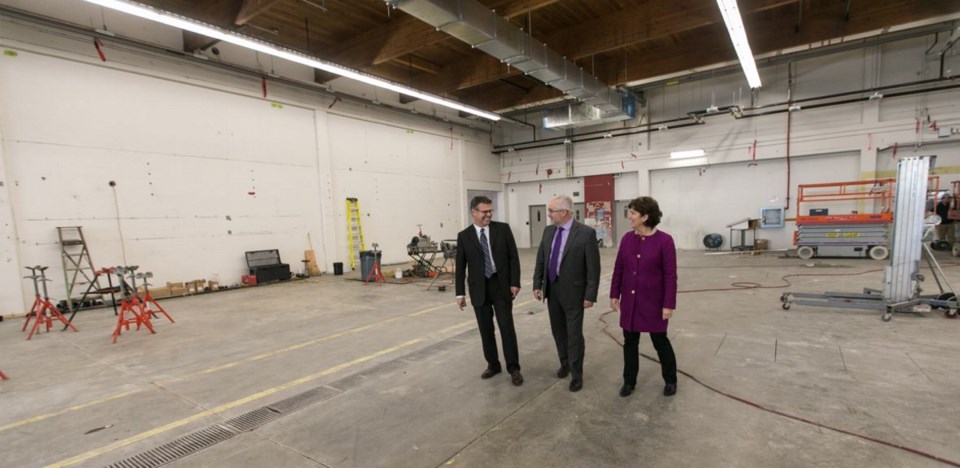Eight months from now, a large empty bay in the James White Building at Camosun College should be humming with activity.
The space is being transformed into the Babcock Canada Interaction Lab, made possible through an $800,000 donation from Babcock. Students from all over Camosun will be able to use the lab, Camosun president Sherri Bell, speaking at a Tuesday event to mark the financial support. “You will have students from different disciplines — trades, technology, business and health — working together in this space to solve real-world problems, to make our community a better place.”
They will develop skills that employers say they want from college graduates, Bell said. “So critical thinking, creative thinking, problem solving, communication, teamwork. That’s happening as they’re working together.”
Equipment will include 3D printers and virtual-reality technology that can help a range a companies with product development, and also relate to Babcock Canada’s work in the field of engineering support. Locally, its work includes a contract to service Canada’s submarine fleet. It is also active in sectors such as energy and transportation.
Money for the lab should be considered an investment rather than a donation, said Babcock Canada president Mark Dixon. It is the largest single contribution to Camosun’s TRADEmark of Excellence Campaign, which generated $6.5 million — surpassing the goal of $5 million — to support trades education.
Babcock Canada, a unit of U.K.-based Babcock International, benefits from affiliations with educational institutions such as Camosun, Dixon said. Because of a growing need for skilled workers, it is important to send a message to students “that the trades, the technical area, really is a great career to move into,” he said.
For Babcock Canada, that will include finding co-op work placements for students while they are at Camosun, as well as jobs once they graduate, Dixon said.
Murray Farmer, who co-chaired the TRADEmark campaign with his wife, Lynda, said Babcock Canada is an important part of the legacy created by the fundraising initiative. “Babcock is developing Canadian expertise and investing in economic development and people right here in our own community.”
Dave Lefler, 33, is a Camosun graduate working for Babcock Canada in marine-design drawing, and he’s happy to be working in his home town. Lefler said he began with a technology diploma in mechanical engineering from Camosun and went on to earn a mechanical-engineering degree from the University of Victoria. “I started off as a co-op and then got hired as permanent.”
A partnership like the one between Camosun and Babcock follows from a well-established trend, said Tim Walzak, director of Camosun Applied Research and Innovation. “It was recognized about 10 years ago that Canadian colleges play an integral role in translating our basic research knowledge into real products. “Putting into practice, implementation, application, that’s the ‘sweet spot’ for the Canadian college system.”
As state-of-the-art as the equipment in the lab will be, the facility goes beyond that, Walzak said.
“This is not just about technology, it’s not just about trades, it’s not just about business,” he said. “It’’s about putting them all together in a very cohesive, impactful approach for problem solving.”



